Known as the land of bamboo, Cu Chi District (Ho Chi Minh City) is a suitable place for production of bamboo articles. Among a wide range of products, Tan Thong Hoi bamboo screens are the ones that bring high economic value to people and are exported to many countries all over the world.
Recently, bamboo has been running short in Cu Chi District so bamboo screen producing workshops there have to gather materials from other south-western provinces. Most bamboo trees in the west are old with thick, round and naturally glossy canes, thus increasing the quality of the screen.
Tan Thong Hoi bamboo screens are manually made by skilled workers. The main material for making screens is the top part of bamboo canes with an evenly small diameter. First, the outer smooth skin of the canes is scraped away and then the bamboo is cut into pipes of 6cm-length and drenched in a soapberry solution to avoid being destroyed by termites. After being sun dried for two days or dried by machines at 70-800C, the bamboo is ready for making screens.
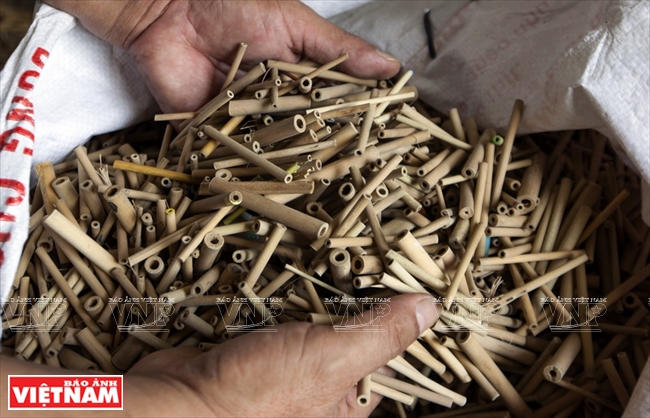
Material for screen production is the top cane of bamboo trees with a small diameter. Photo: Thong Hai/VNP
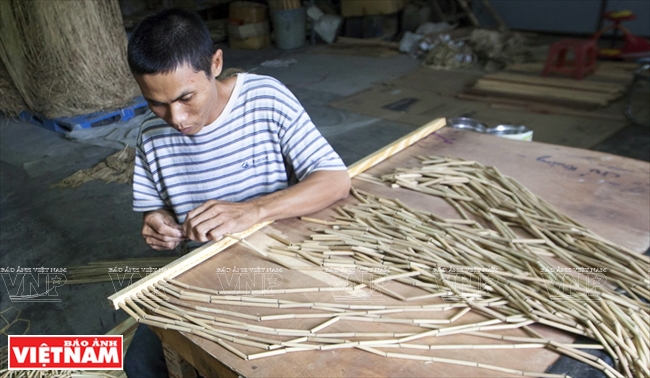
Dry bamboo pipes are strung together with zinc threads. Photo: Thong Hai/VNP
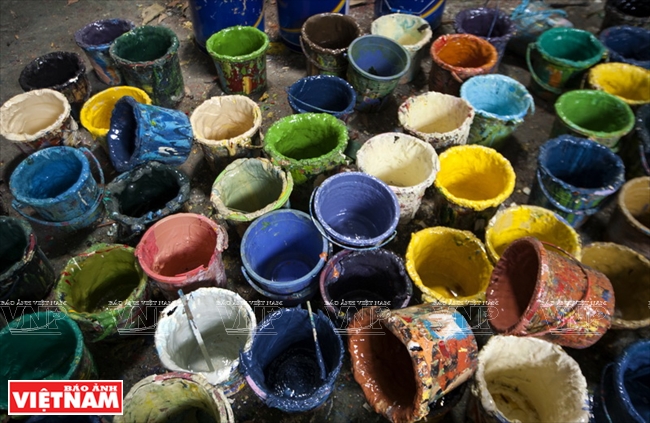
Paint of different types is used to decorate the screen. Photo: Thong Hai/VNP
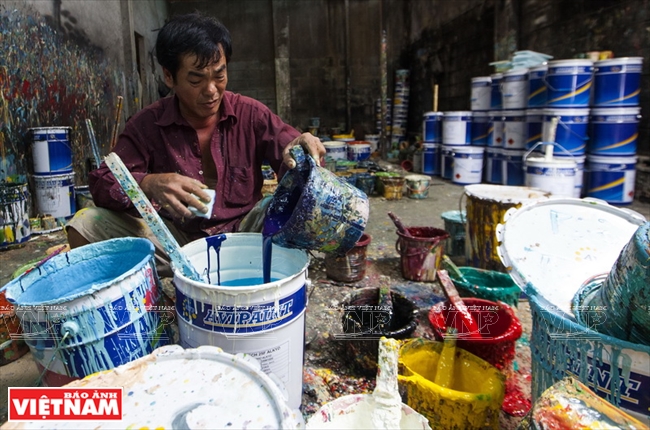
Mixing paints used to colouring bamboo screens. Photo: Thong Hai/VNP
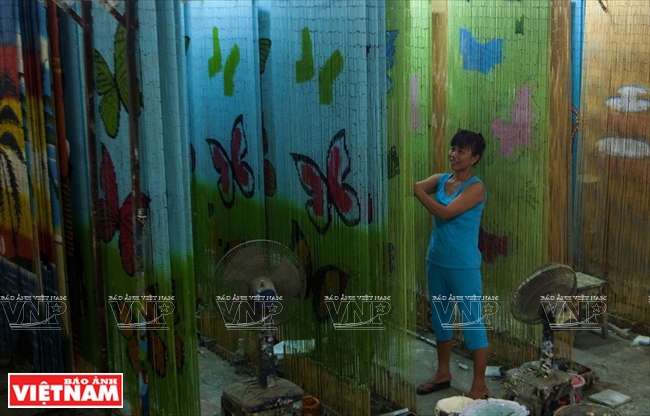
Decorating screens with patterns. Photo: Thong Hai/VNP
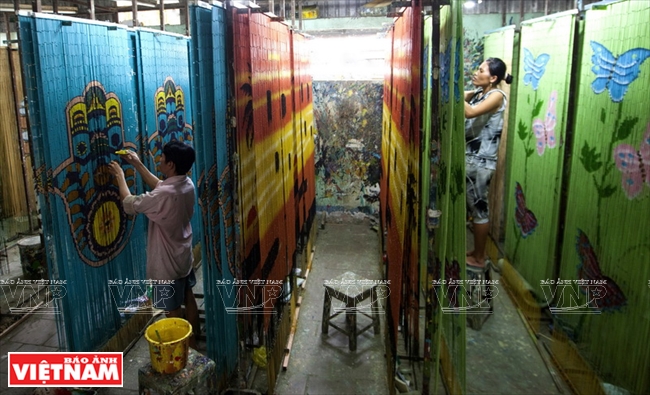
Painting to add different patterns determines the beauty of the screens. Photo: Thong Hai/VNP
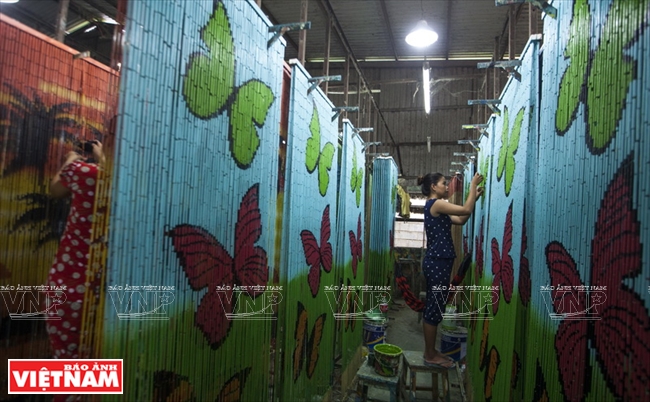
Painting requires the carefulness of makers. Photo: Thong Hai/VNP
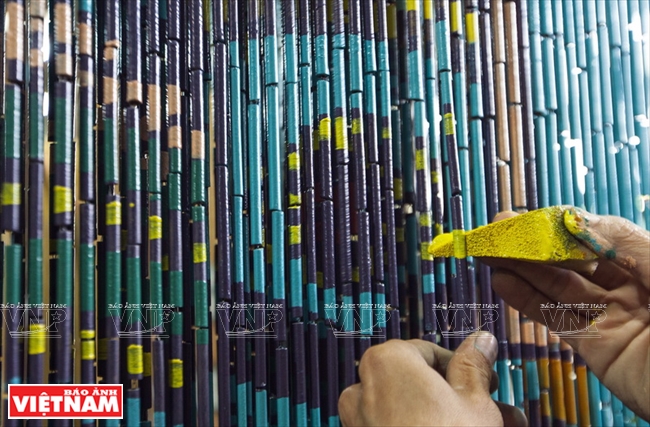
A sponge is used to decorate bamboo screens. Photo: Thong Hai/VNP

Painted screens are left to dry. Photo: Thong Hai/VNP
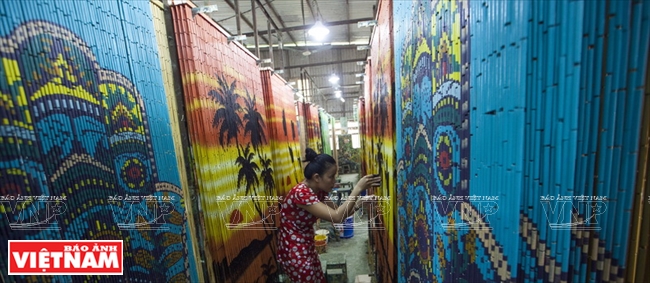
Bamboo screens are produced by hand in Tan Thong Hoi. Photo: Thong Hai/VNP

Bamboo screen is often used in Vietnamese houses for decoration and space separation.
Photo: Thong Hai/VNP |
Nguyen Huu Ben, owner of Thanh Truc bamboo screen workshop acknowledged that there are many stages in making a bamboo screen, including selecting bamboo, putting bamboo pipes into strings, forming the frame for the screen, and painting pictures on it.
Dry bamboo pipes are strung together with zinc thread and then the strings are sewn together to make a screen. Screens have different numbers of strings, depending on the demand of customers. Usually, each has 100 strings of 2m-length. Sewing is a major stage that requires the makers to be careful to make the screen’ strings even. After sewing, a rudimentary screen has been completed and only needs painting.
Painting determines the beauty of the screen as it adds diverse and colourful patterns and pictures to an otherwise plain one. The screens are not painted with a brush but with a sponge.
Bamboo screens are a familiar object used to separate spaces and also as a decorative object in the house. It brings about a pleasant and relaxing natural touch to your living space. The screen can produce a rustling sound when set in motion by the wind.
At the present time, there are seven major workshops in Tan Thong Hoi Commune making bamboo screens for agents in the city. Their production attracts hundreds of local labourers and over 500 households in the neighbouring communes of Cu Chi and Hoc Mon districts. A labourer earns an average of six million dong/month. Ben’s Thanh Truc bamboo screen workshop and other workshops in Tan Thong Hoi have received many orders from foreign countries such as Switzerland, the Netherlands, Germany, Thailand and China.
Some of Tan Thong Hoi bamboo screens:

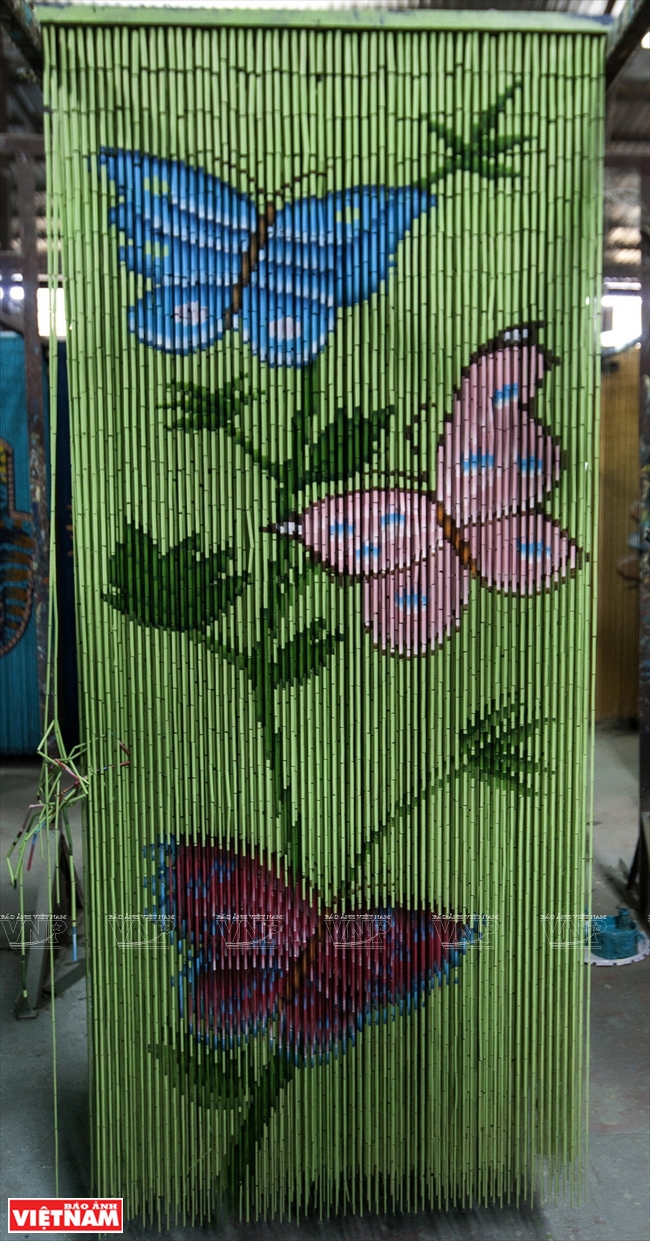
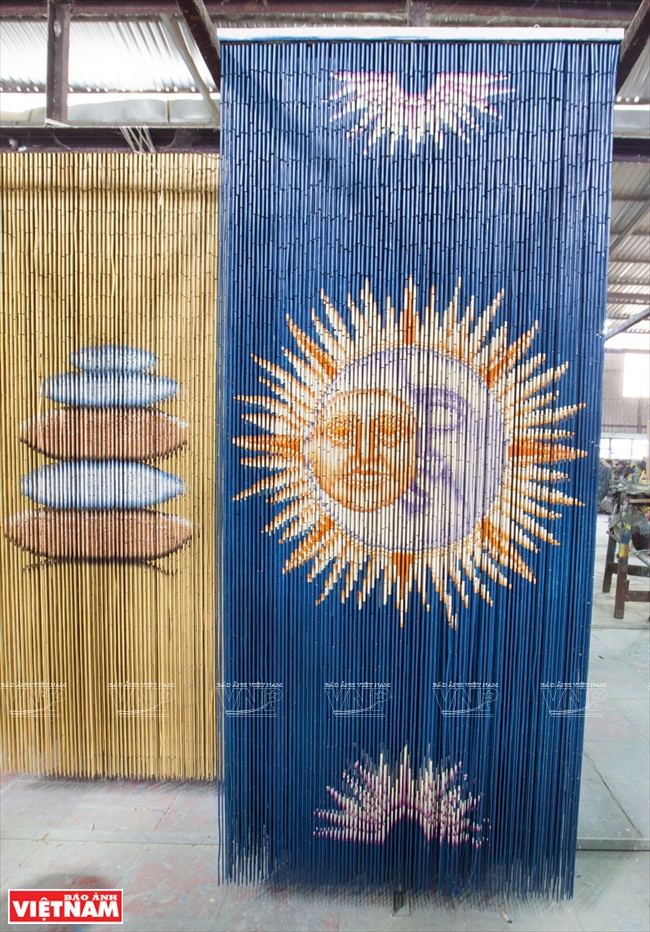
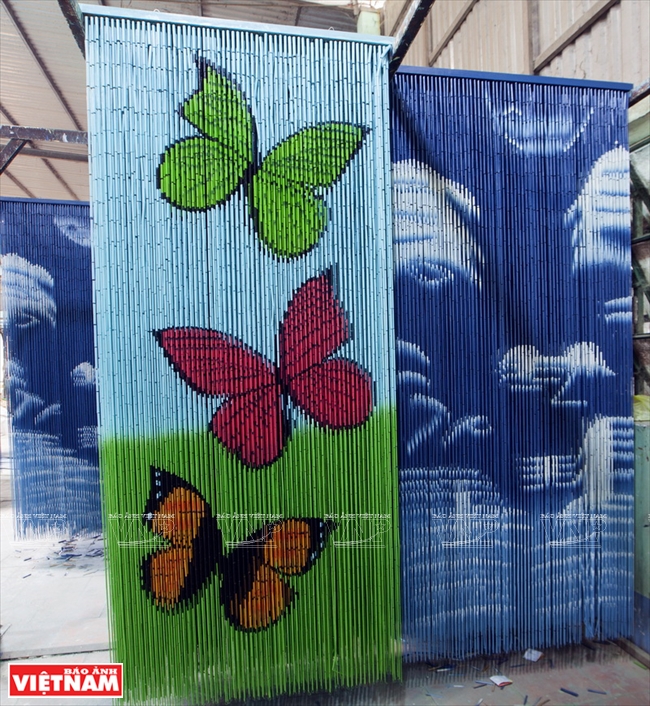
 |
Story: NGUYEN VU THANH DAT – Photos: THONG HAI
phamtrangnhung